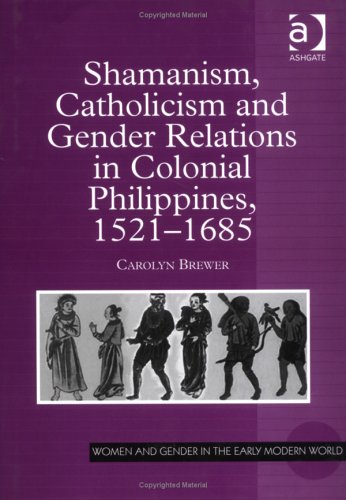Women and Gender in the Early Modern World
1 total work
Shamanism Catholicism and Gender Relations in Colonial Philippines,1521-1685
by Carolyn Brewer
Published 28 August 2004
In this study, Carolyn Brewer explores the cultural clash that ensued when Hispanic Catholicism and Filipino Animism came into contact in the sixteenth and seventeenth centuries. In so doing, she demonstrates the connections between religion, ideology and power, the evidence mounting with cumulative force to support her argument. Brewer highlights references to women who fleetingly appear in records of Magellan's voyage, and sets the scene for the arrival of Legaspi and the colonial enterprise. She explores the way indigenous women were represented in various early modern sources and delves into the processes by which dichotomous notions of 'good' and 'bad' women were introduced by successive waves of Spanish friars. The focus of the narrative then shifts from women in general to the specific role of female shamans and the manner in which these women were revalued from the prestigious and wealthy baylan to the reviled and banished bruha or witch and their roles eventually usurped by Catholic priests. Brewer also explores the ways in which asog (men who dressed as women) were converted to Catholicism.
Finally, using inquisition documents, Brewer presents a case study from the town of Bolinao in Zambales Province. She reconstructs indigenous gender relationships, in the process of being fractured by inquisitorial processes, in which high class Zambal men and boys collaborated with the Spaniards to banish the shaman women and eradicate their influence. A meticulously researched book, Shamanism, Catholicism and Gender Relations constitutes a sustained examination of how contact with Christianity re-shaped gender roles in the early modern Philippines.
Finally, using inquisition documents, Brewer presents a case study from the town of Bolinao in Zambales Province. She reconstructs indigenous gender relationships, in the process of being fractured by inquisitorial processes, in which high class Zambal men and boys collaborated with the Spaniards to banish the shaman women and eradicate their influence. A meticulously researched book, Shamanism, Catholicism and Gender Relations constitutes a sustained examination of how contact with Christianity re-shaped gender roles in the early modern Philippines.
